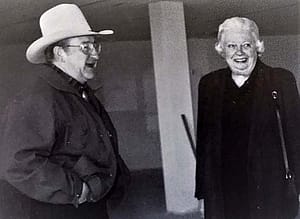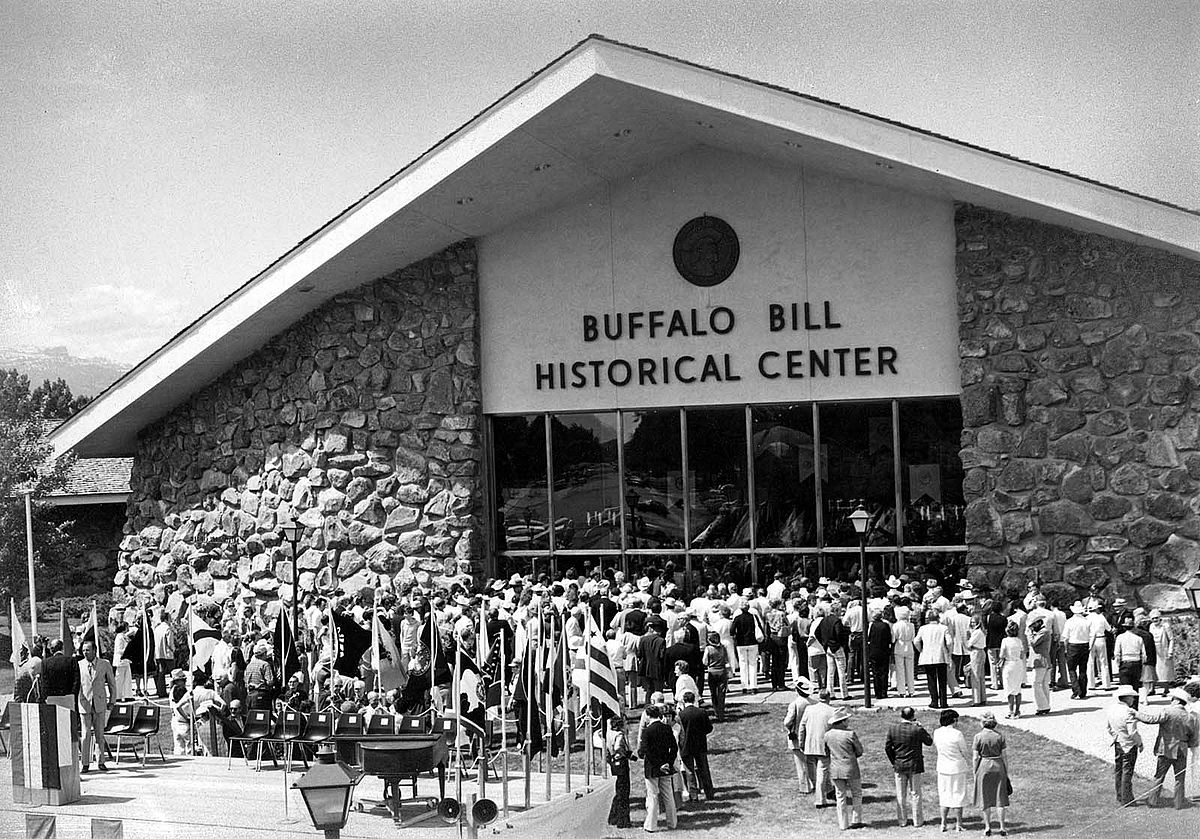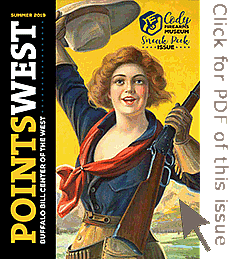
Cody Firearms Museum: On Target, Then and Now – Points West Online
Originally published in Points West magazine
Summer 2019
Cody Firearms Museum: On Target, Then and Now
Center newsletters tell the CFM story
Edited by Marguerite House
I wish I could thank personally all the people who have come forward to help us so generously in supporting this new museum. Certainly, millions of visitors in the decades ahead will gain a greater appreciation for the rich artistic and historical heritage of firearms in America.
And so, with these words in the spring of 1990, Mrs. Henry H.R. “Peg” Coe, Chairman of the Board of Trustees, expressed delight in “concluding this large fund drive in just two and one-half years.” The then Buffalo Bill Historical Center had just wrapped up a $7.3 million capital campaign to build an addition to the facility—its new Cody Firearms Museum.
The Center’s quarterly newsletter that spring summarized the campaign with nods to volunteers and donors. The nationwide fundraising efforts netted contributions from a host of donors including the Robert Woodruff Foundation of Atlanta; the estate of the former board chairman Ernest J. Goppert Sr.; William Ruger, Chairman of Sturm, Ruger & Co., Inc.; the National Endowment for the Humanities; the Kresge Foundation of Troy, Michigan; Val Browning; and the Boone and Crockett Club.
Peter Hassrick, the Center’s Executive Director at the time, echoed Coe’s sentiments, saying, “It is rare when an institution has the opportunity to create a new world-class facility. I anticipate that the interest and enthusiasm generated because of the new Cody Firearms Museum will bring greater numbers of visitors to Cody and Park County in the years ahead.”
Aiming high at New York’s 21 Club
As construction was well underway for a June 22, 1991, opening of the firearms museum, Coe and Jim Minter, campaign chairman, took a stroll through the partially completed structure. In the spring 1991 Center newsletter, the two swapped stories about the early days in Cody and how the idea of a new Buffalo Bill Museum in the 1960s would lay the groundwork for the Cody Firearms Museum of the 1990s.
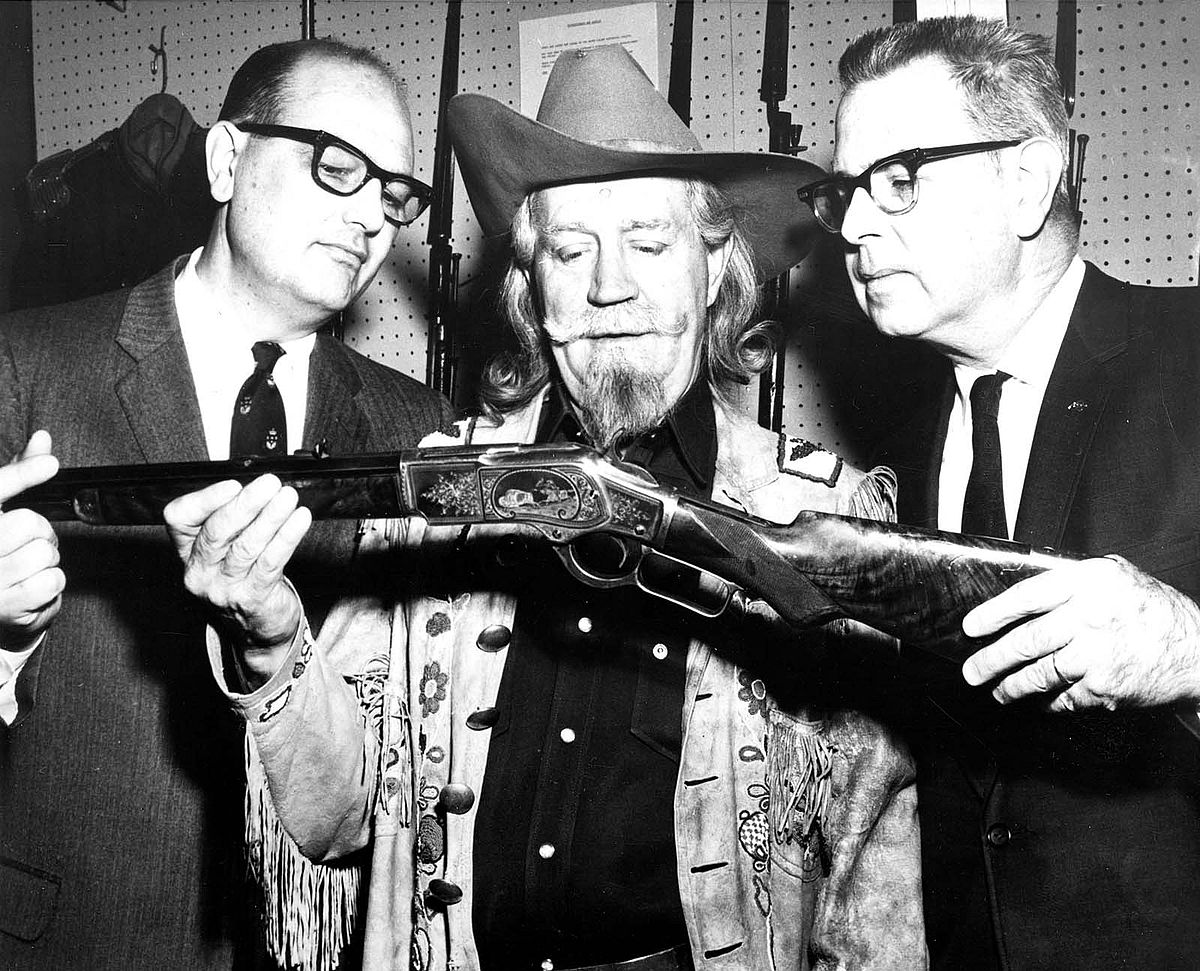
To generate interest in the new Buffalo Bill Museum, Dr. Harold McCracken, director of the Whitney Gallery of Western Art [today’s Whitney Western Art Museum], and Minter had an idea to have Fred Garlow, Buffalo Bill’s grandson, appear on the Today Show hosted by Hugh Downs. McCracken called Peter Kriendler, Center trustee and owner of the famous 21 Club in New York, to help arrange it.
Arriving at the studio of the Today Show, Garlow, dressed in full Buffalo Bill regalia, engaged the audience with his portrayal of Buffalo Bill so completely that the television program To Tell the Truth followed up with an invitation of its own: Will the real grandson of Buffalo Bill please stand up?
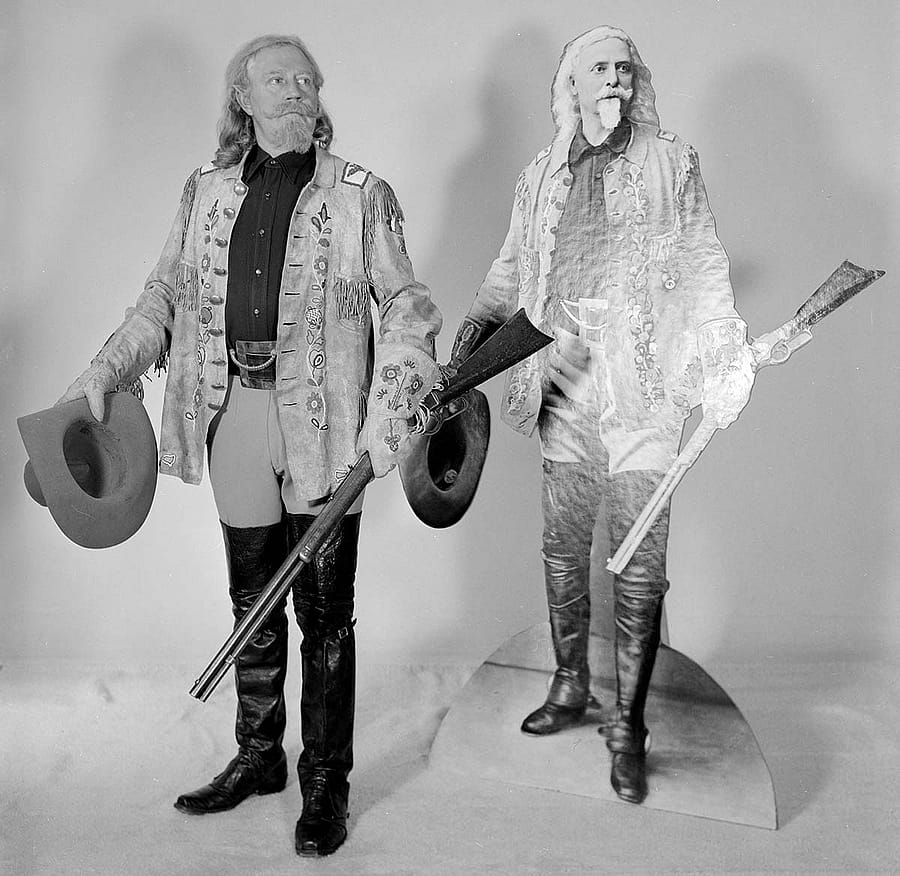
Kriendler planned a luncheon at the 21 Club for the following day with Garlow and Minter in attendance, advising them that he’d invited a Winchester representative, James Rikhoff, the firm’s public relations director who attended on behalf of the Olin Corporation.
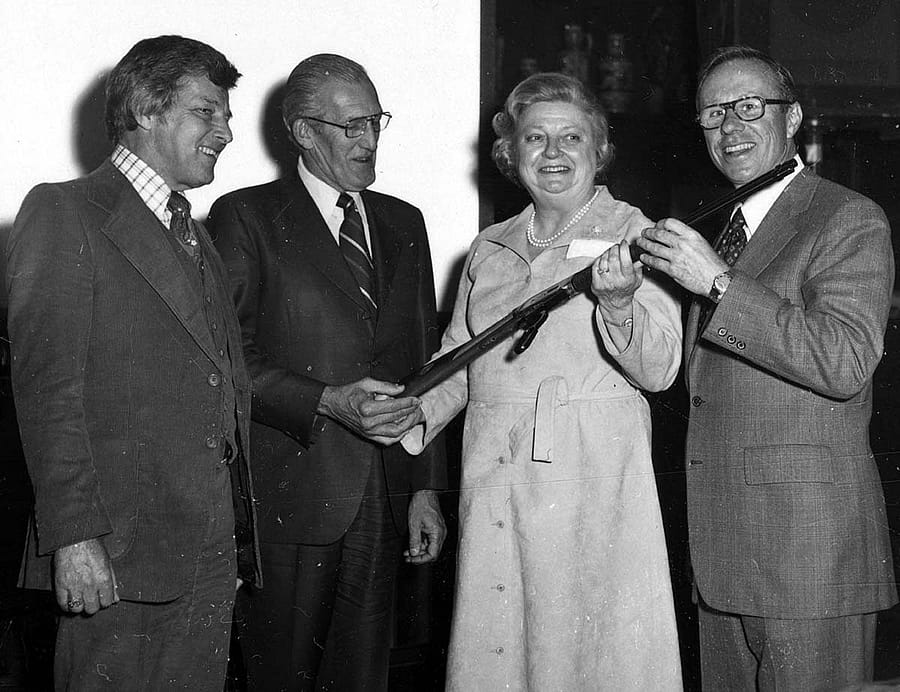
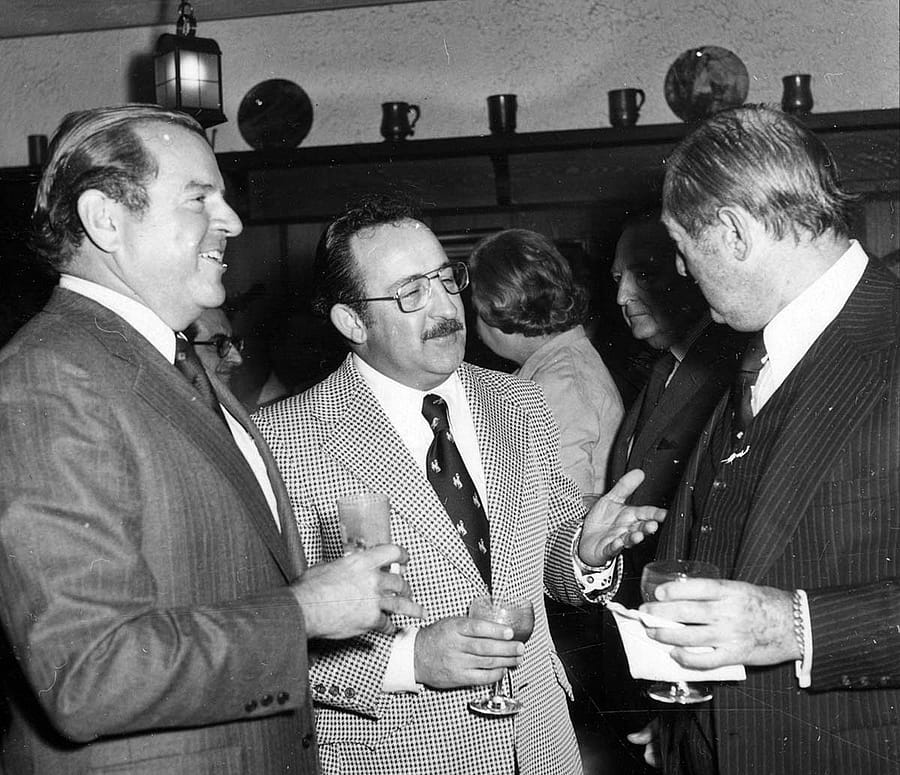
“I was pleased to meet the best firearms manufacturer in America and believed it was pretty lucky, maybe even an omen, as Freddy and I were carrying Buffalo Bill’s Winchester Model 1873 all around New York!” Minter exclaimed. “It never occurred to me that…Cody would be the home of the world’s largest firearm museum because of the Olin Winchester Collection.”
“Never one to mince words, Peter asked Rikhoff if John Olin would be interested in contributing to the Historical Center as we were planning to build a new wing [i.e. Buffalo Bill Museum], and it was challenging trying to raise the funds,” Coe added.
“Rikhoff explained that Mr. Olin was ‘hit up’ all the time, but he would try to think of something.
“That ‘something’ turned out to be the Winchester commemorative rifle that, with royalties of $5 per gun, raised in excess of $600,000 for the new construction. More than 120,000 firearms at $129 each were sold!” Coe continued. “The Winchester Group of Olin Corporation also produced three hundred specially engraved models for the Historical Center, given as a premium to each person who donated at least $1000.”
Minter called it “a marriage” of sorts and noted that since so many of the “old-time” Winchester executives were hunters, they started coming to Cody.
The Historical Center’s new Buffalo Bill Museum was dedicated in 1968. “It came off with a bang, but we worried every day a horse would be killed on the highway or worse,” Minter said. “George Nichols, who orchestrated special projects for Winchester, helped stage the opening, and a lot of Olin people attended along with such celebrities as Slim Pickens, Glenn Ford, Frank Ferguson, Robert Fuller, General James H. Doolittle and, of course, local folks.”
Winchester Collection triggers Cody Firearms Museum discussion
The Historical Center received the massive Winchester Collection in 1976 as a loan from the Olin Corporation, and actor John Wayne and thousands of well-wishers poured into Cody that July 4th to celebrate the collection—and of course, the nation’s bicentennial.
“The Winchester Group of Olin Corporation added to the trust they displayed in lending the collection by presenting the museum with three newly commissioned John Clymer paintings: The Homesteaders, The Cattle Drive, and Gold Train,” Coe noted. “A.H. ‘Rocky’ Rohlfing was vice president of the Winchester Group, and he had a lot to do with the Center getting those paintings.”
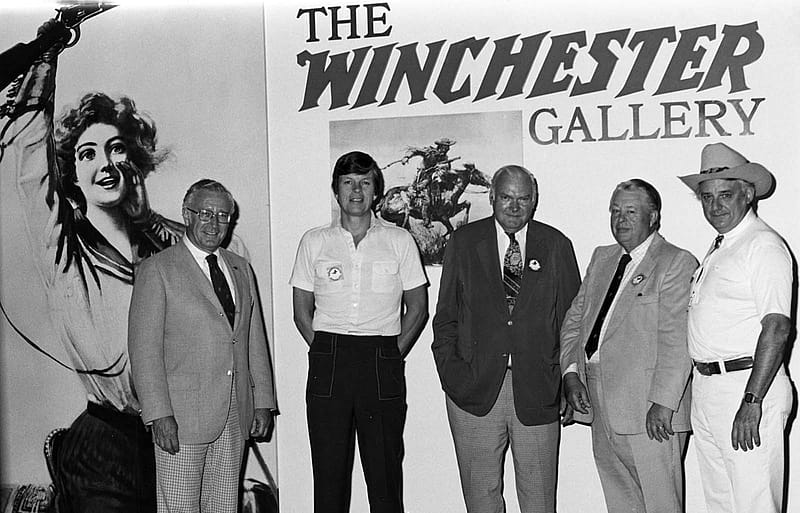
The Center originally displayed the Winchester Arms Museum within the Buffalo Bill Museum, and then later, on the lower level in today’s Anne & Charles Duncan Special Exhibition Gallery. By 1987, trustees launched talks about constructing a new facility for the firearms collection and what it should be called. William Ruger called for agreement to change the name from the Winchester Museum to the Cody Firearms Museum, “which would better encompass the diverse collection.” Olin Corporation concurred, and Ruger then inaugurated the campaign by pledging a million dollars.
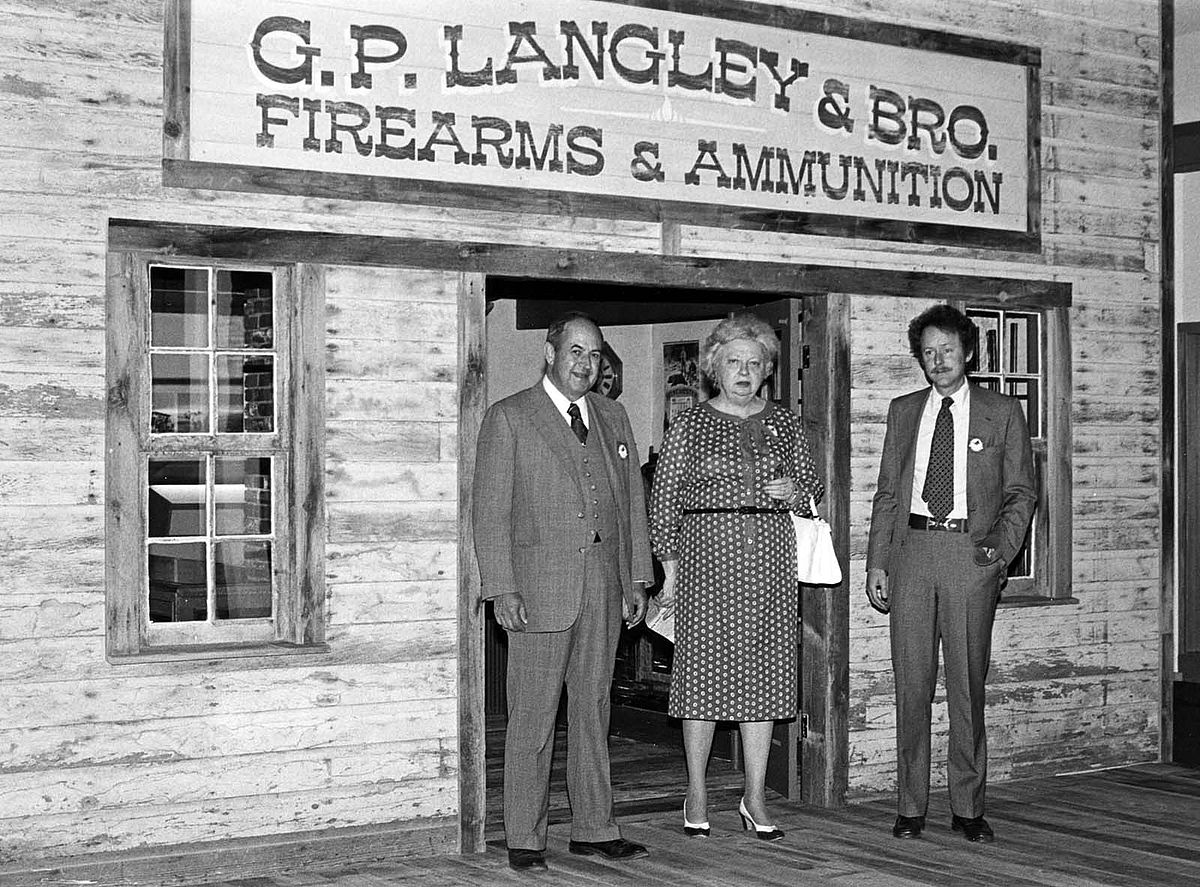
In December 1988, the Olin Corporation officially donated the collection to the Center.
Firearms collection shoots toward new home
The culmination of more than five years of planning, the Cody Firearms Museum opened the most significant collection of American arms in the world on June 22, 1991. The new space contained more than five thousand historically and artistically significant American and European projectile arms that chronicled the development of firearms through four centuries.
The heart of the new wing was the Winchester Collection, but the museum also featured significant and uncommon examples of arms produced by firms as diverse as Ithaca and Fabrique Nationale, and artifacts ranging from Renaissance handcrafts to IMI’s (Israel Military Industries) Uzi.
But the museum’s focus encompassed far more than firearms. Other products manufactured by the arms producers include flashlights, sewing machines, and bandsaws. These pieces were also represented in significant numbers in the museum, as were the engineering drawings (30,000 in all) and specification sheets which formed the basis for their production.
The Center’s summer 1991 newsletter highlighted the new 45,000-square-foot firearms museum, saying that it was “arranged creatively to enlighten and entertain visitors with a variety of interests including the general public, the lover of decorative arts, the student of history and technology, and the serious collector.”
The various galleries and exhibits were highlighted and included the following: Coors Video Theater, Robert W. Woodruff Gallery, Colonial Gun Shop, Stage Coach Stop, Boone and Crockett Club Hunting Lodge, General James Doolittle exhibit, Arms Factory, Hardware Store, Browning Gallery of Highly Embellished Firearms, John and Spencer Olin Gallery, William B. Ruger Galleries, and the Study Gallery on the lower level.
Finally, behind the Arms Factory, visitors passed through an arch over which hung the originally inscribed, two-ton lintel from the Winchester Repeating Arms Company factory in New Haven, Connecticut.
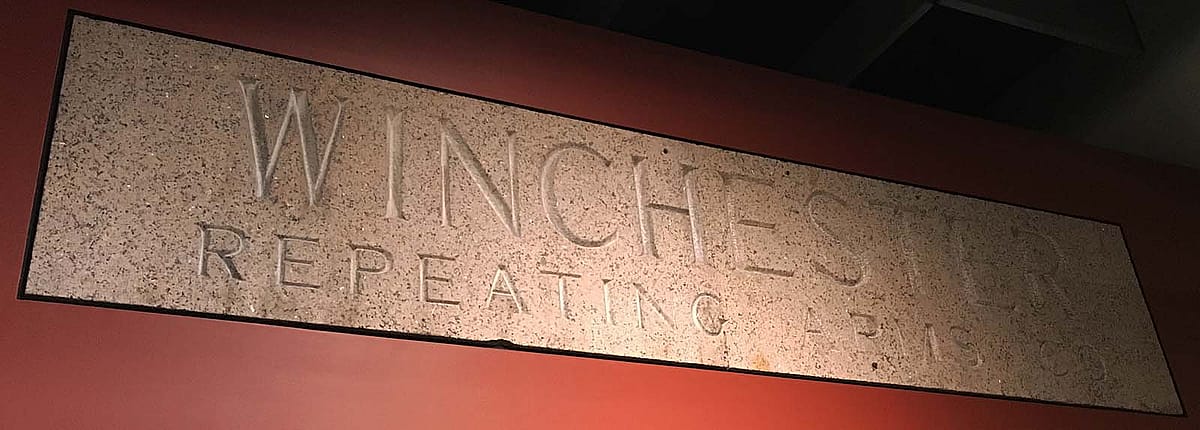
Approved for launch
“The June dedication of the new CFM wing served as far more than the consecration of a building: It symbolized and signaled the coming of age of an institution, its operational philosophy, and its accompanying services to the public—in all their aspects,” the post CFM-opening, fall 1991 issue of the Center’s newsletter reported.
Much of the museum’s design development—undertaken in conjunction with the renowned New York museum design firm of Vincent Ciulla and Associates—focused on exhibit presentation which would appeal to the broadest possible audience. The CFM’s 23,000 square feet of exhibit space was conceptually structured like a menu, offering varying fare to match the different tastes of our extraordinarily diverse, museum-going public.
More than the consecration of a building In August 1991, the Open Storage area (later tagged “Study Gallery”) opened to present the kind of encyclopedic presentation of collections which typified most exhibits in the previous Winchester Arms Museum, and which should well-please our specialized collector constituency.
In fact, the guiding notion that varied approaches in CFM exhibits and service should educate and entertain the broadest possible constituency was very much a reflection of national philosophical trends in museums at the time. One month before the dedication of the CFM, the national organization of the museum profession, the American Association of Museums (AAM, now the American Alliance of Museums) adopted a new revision of its benchmark Code of Ethics. The underlying philosophy of this document was a rededication to serving all audiences.
In summer 2019, the Cody Firearms Museum reopened with a brand-new layout, building on foundations laid by a wealth of staff, volunteers, board members, patrons, and donors, all committed to educating and entertaining “the broadest possible constituency.” Today’s CFM remains dedicated to the very same legacy.
About the editor
Marguerite House served as Points West editor from 2005 through May 2018. She excerpted this story from four issues of the then Buffalo Bill Historical Center newsletter, dated spring 1990, spring 1991, summer 1991, and fall 1991.
Post 278
Written By
Nancy McClure
Nancy now does Grants & Foundations Relations for the Center of the West's Development Department, but was formerly the Content Producer for the Center's Public Relations Department, where her work included writing and updating website content, publicizing events, copy editing, working with images, and producing the e-newsletter Western Wire. Her current job is seeking and applying for funding from government grants and private foundations. In her spare time, Nancy enjoys photography, reading, flower gardening, and playing the flute.
